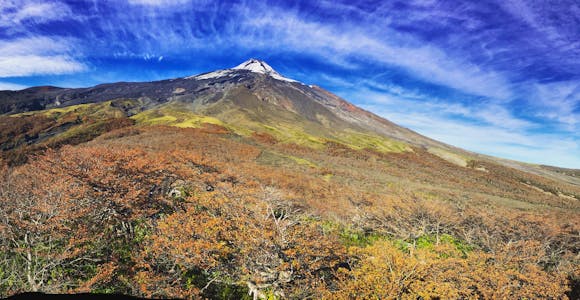
Villarrica National Park
The star power of three volcanoes is what draws visitors to Villarrica National Park on the doorstep of the outdoor sports capital of Pucón.
Discover MoreDeep roots in Patagonia: We are ex-guides, tour leaders, outdoor enthusiasts, & adventurers.
We’ve got our feet on the ground: Impartial advice, a bespoke service, and at no extra cost.
For the ends of the Earth: Sustainability is more than our carbon footprint (but we’re reducing that too).
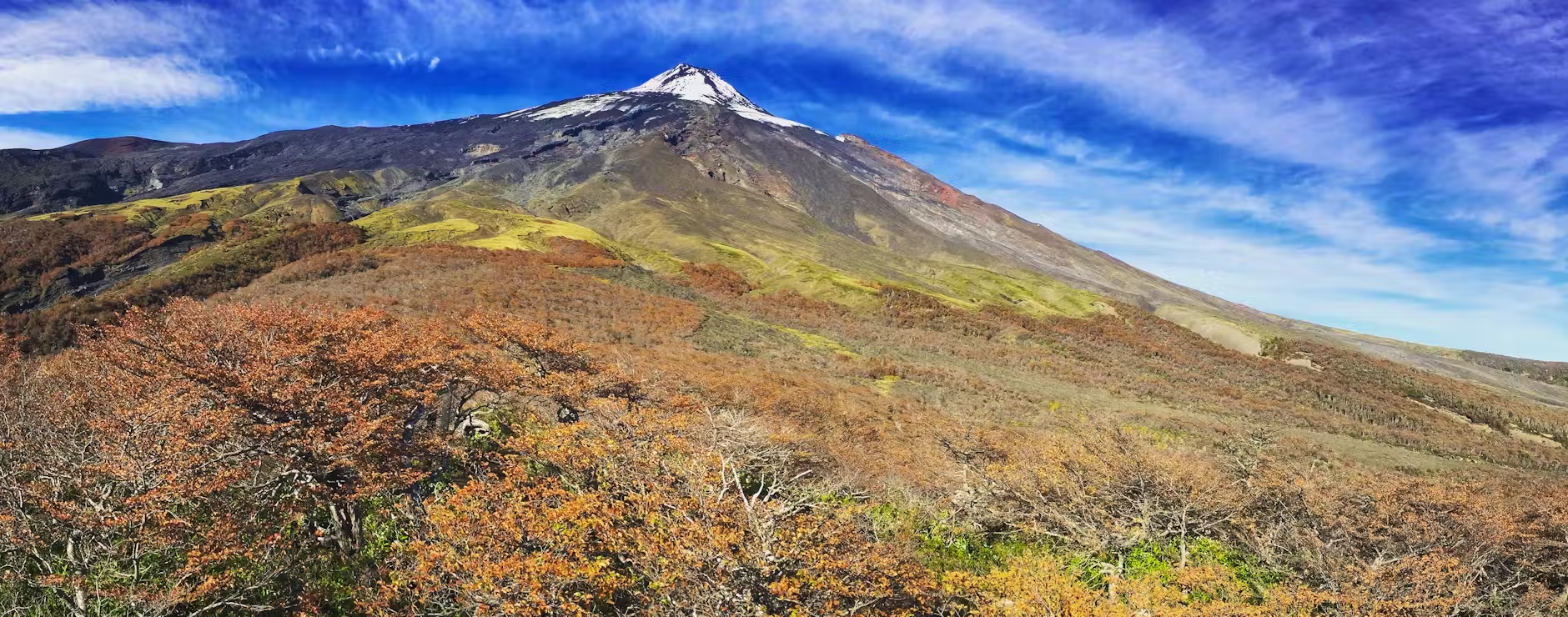
The star power of three volcanoes – one of them still active and smoking – is what draws visitors to Villarrica National Park. It’s many well-marked trails make it a perfect outdoor playground just a short drive from Chile’s adventure sports capital of Pucón. Whether you’re pulling on your hiking boots or taking to the saddle of a mountain bike or a horse, the forests, grasslands, volcanoes and glaciers of Villarrica demand to be explored.
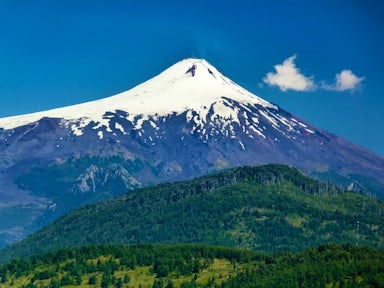
Villarrica National Park
Many of Chile's national parks offer their visitors a stunning volcano or sometimes even two, but Villarrica (Parque Nacional Villarrica in Spanish) lays on an unparalleled three. The most striking is the park's namesake, the glowing and smoking 2847m peak of Villarrica itself – the most active volcano in the country – but to the east of you’ll find the rather quieter Quetrupillán (2360m), and finally the steeply rising slopes of mighty Lanín, whose peak actually lies just across the Argentine border, where it forms the centrepiece of Lanín National Park.
Villarrica is the most active volcano in Chile. Its first recorded eruption was in 1558 by the Spanish, but the Mapuche have known of its fiery temperament for far longer: its name in the local Mapudungun language is Rukapillan, which means ‘the Great Spirit’s House.’ Major eruptions in 1963 and 1964 caused widespread damage in the area from the release of lava and ash, and there was a minor eruption as recently as 2015. Volcanologists closely monitor its moods and issue alerts when new activity is detected.
The park itself was established in 1940 to protect its temperate rainforest and high altitude grasslands. The lower parts of the park are rich in araucaria (monkey puzzle) and lenga (Chilean beech) trees, watered by the rainy weather systems from the Pacific. It’s possible to visit year-round to enjoy the many hiking trails that criss-cross the park, though the area is at its rainiest between March and August, when the high slopes can also receive significant amounts of snow.
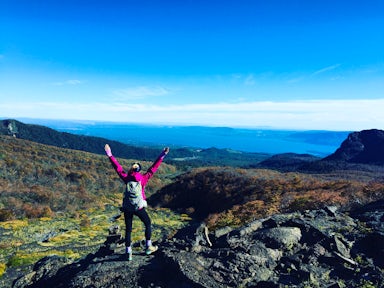
View from Villarrica Volcano
There are 17 marked hiking trails through Villarrica National Park, offering anything from short walks to longer 24km round trips.
The park’s banner attraction is Villarrica Volcano itself. The climb to the crater’s edge allows you to peer into its smoking lava-filled heart. The ascent is non-technical, but requires a guide who will instruct in basic crampon and ice-axe technique. You must be in good physical condition for the climb, which takes around nine hours from Pucón Ski Centre.
Some of the best hikes are to be found in the park’s Quetrupillán Sector, around Villarrica’s southern slopes. Access here is best the summer months due to poor road and high snowfall. The forest hikes along the slopes of Quetrupillán are particularly enjoyable, and give spectacular volcano views when you emerge from the tree line.
The Pichillancahue Glacier trail takes you along a route criss-crossed by meltwater streams until you reach the so called ‘black glacier’ covered with volcanic ash but hiding great icy caves below.
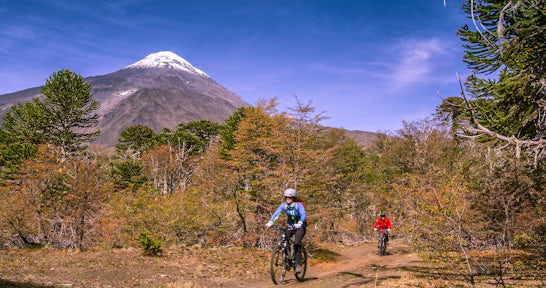
Mountain biking in the shadow of Villarrica Volcano
Many of Villarrica’s trails offer equally tempting routes for those interested in exploring on wheels as well as by foot, and there is great fun to be had by slowly exploring the park under your own pedal power.
If you're after something a little more adrenaline-pumping, there is one track designed purely to give mountain bikers a sharp rush of adventure. The Downhill Rukapillan bike trail starts 16km south of Pucón at the ski centre on the slopes of Villarrica itself, and is a steep descent of around 1000m along a route picked out from volcanic scree. As you descend with Villarrica’s smoking cone at your back, you’re gifted with fabulous views of Pucón and the lake beyond. It’s not for the faint of heart, but it’s one of the most exciting rides in Patagonia.
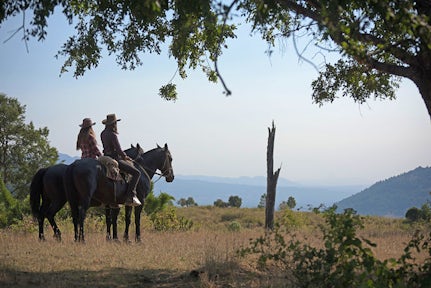
Horse riding in Villarrica National Park
For those wanting to channel their inner gaucho, many of the trails in Villarrica National Park are particularly enjoyable on horseback. One of our favourite rides is the Los Nevados trail, which leads through the Chinay Sector entering the park from the north and skirting along the southeastern slopes of Villarrica Volcano.
The trail climbs slowly through araucaria, lenga and coïgue forest through high altitude pastures until you reach an almost lunar landscape of high altitude volcanic desert. You are rewarded with a views of volcanoes in every direction: Villarrica above you, Quetrupillán and Lanín in the east, distant Llaima and Longuimay to the north in Conguíllo National Park, and the twin peaks of Mocho-Choshuenco in the far south.

The terrace at Vira Vira
Villarrica National Park is so close to Pucón that you can stand in the centre of town and feel you could reach out and touch the summit of volcano, so most people base themselves in the town and make day trips into the park. There is no accommodation in the park itself.
About 16km west of Pucón, but close to the entrance to the park’s Quetrupillán Sector, the luxury Hotel Vira Vira is one of our favourite places to stay in the region. Set in 55 acres of private land, with a host of excursions on hand to explore the park and surrounding area.
Villarrica National Park really is on Pucón's doorstep: the main entrance to the park (n the Rucapillán Sector) is just 8km south of the town, and a further 8km up winding roads to the Ski Pucón resort on the slopes of the volcano. A private vehicle is essential; there is no public transport.
The nearest airport to Villarrica National Park is Temuco’s Araucanía Airport (code ZCO), 90km away by road (roughly 80 minutes by private transfer). The airport has daily flights to Santiago (90 minutes).

The star power of three volcanoes is what draws visitors to Villarrica National Park on the doorstep of the outdoor sports capital of Pucón.
Discover More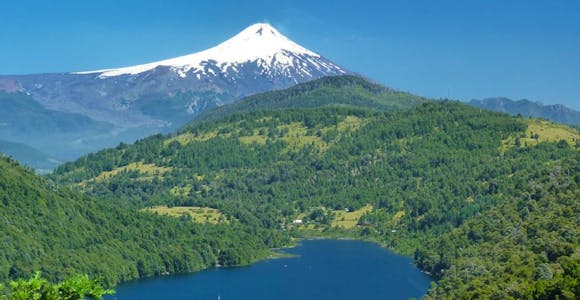
Spread over the Andean foothills and close to the adventure sports capital of Pucón, Huerquehue is one of the region’s most charming national parks.
Discover More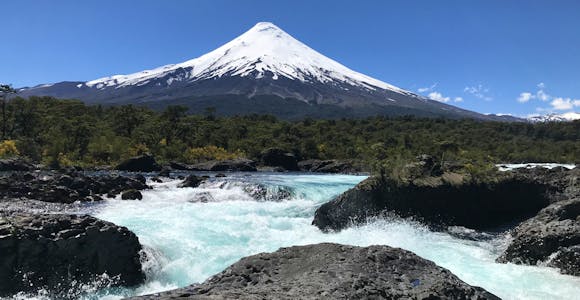
Snowy Osorno Volcano and the blue waters of Lake Todos los Santos usher visitors into one of the most accessible national parks in the Chilean Lake District.
Discover More
Torres del Paine National Park, with its iconic granite Towers, is one of Patagonia's most popular destinations: a paradise for hikers and outdoor adventure activities.
Discover MoreWe'll spend some time listening to your aspirations, then discuss the kind of experience that might suit you.
Next we'll discuss the options, shortlist the best trips for you and present you our impartial recommendations.
We'll place a 24 hour hold on your preferred option - without obligation - whilst we talk through the details.
Whatever your budget, group size, length of stay, preferred activity or appetite for adventure, we can help.
1 888 970 4571This website uses cookies to ensure you get the best experience on our website. Privacy policy